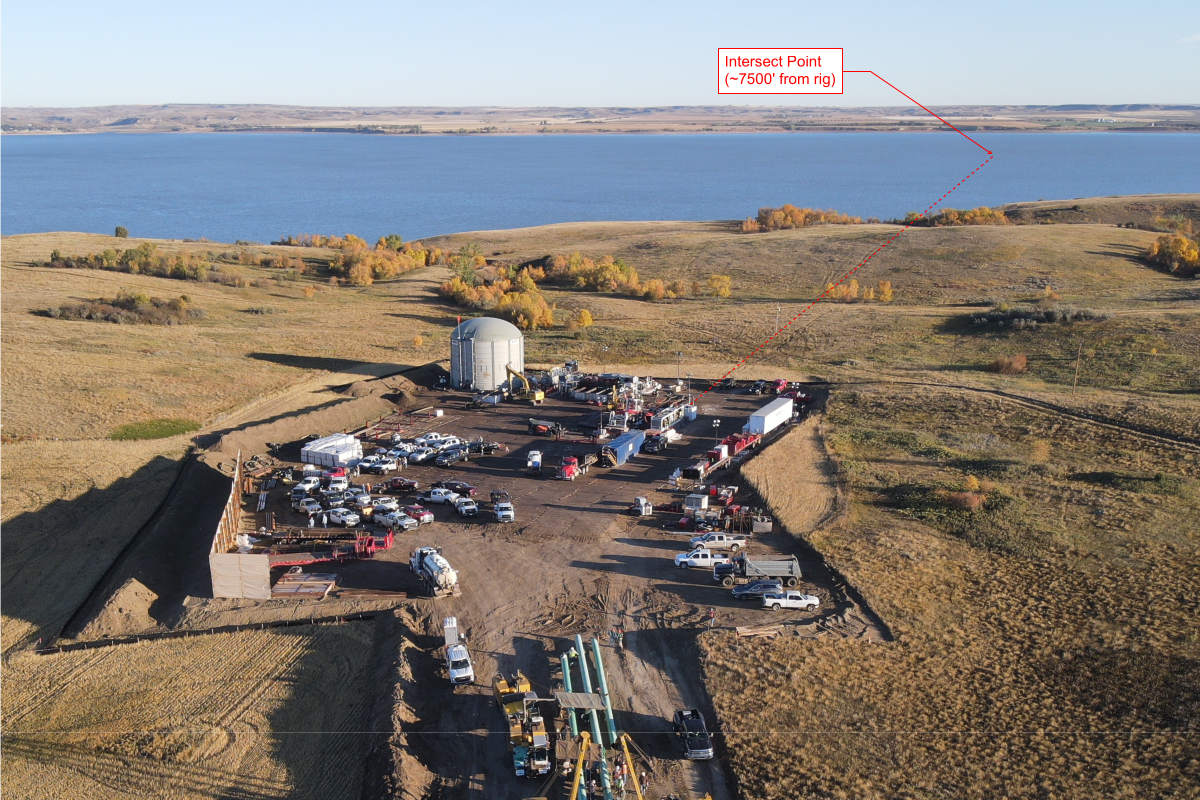
Fluid Cleaning Systems can Keep Equipment, Crews Running at Peak Performance
Drilling fluid is often seen as just another commodity in underground construction. But the truth is, drilling fluid is a versatile multi-tasker that helps keep HDD jobs running efficiently and smoothly in multiple ways.
For starters, drilling fluid acts as a bouncer that tosses problem-starting solids out of the bore hole. It also performs a variety of other tasks — from lubricating downhole tooling, to cooling electronics, to stabilizing the bore hole — to help keep equipment running during a bore.
However, as essential as drilling fluid is to the success of an HDD job, it’s not without its challenges. For some bores, contractors may need to haul in thousands of gallons of drilling fluid. They also must spend time, money and increasingly precious labor hours on disposing of used drilling fluids. And amid growing pressures to reduce the environmental impact of construction jobs, contractors are increasingly looking to reduce how much used drilling fluid they produce and take from jobsites.
To help manage these challenges — and maximize uptime on jobsites — many contractors are turning to a fluid cleaning system.
Creating Better Bores
A fluid cleaning system allows operators to increase fluid velocity, suspending solids in the fluid and be removed from the bore hole more efficiently. This helps prevent solids from falling and settling in the bore hole, which can create a dam and cause drilling fluid to take a different path, potentially causing inadvertent returns. Meanwhile, the drilling fluid can be reused downhole without inhibiting machine performance.
Today, not only do contractors need to spend resources disposing of used drilling fluid and mixing new, clean fluid, but they also face growing restrictions on dumping fluid at jobsites. This is forcing them to spend more time and effort on disposing the fluids at approved waste sites, and less time on jobsites.
A fluid cleaning system can mitigate these costs and efforts. Removing solids from the drilling fluid and then reusing the fluid inherently generates less waste, reducing disposal costs and environmental impact. What’s more, reusing drilling fluid can help contractors be more efficient by spending less time preparing new fluids for bores.
Choosing the Right System for the Job
There’s a lot to consider when picking the right fluid cleaning system. Before anything, it needs to be up to the job by processing the volume of fluid required by the contractor. Some systems are rated to the volume of water they can run through the cones. But a contractor only cares about how much used drilling fluid a system can process. This is why it’s helpful to look for systems that are rated to the amount of actual high solids drilling fluids they can process across their first cut screens.
Another critical aspect of a fluid cleaning system is its shaker screens, which remove solids on the first cut. The latest fluid cleaning systems feature shaker and screen-compression systems that can help contractors more quickly and seamlessly transition when changing screens or adjusting cleaning needs based on soil conditions.
A Texas contractor shows just how valuable a modern, fit-for-purpose fluid cleaning system paired with the right shakers can be.
The contractor was concerned with its existing fluid cleaning system’s ability to recycle used drilling fluid from its million-pound rig, which usually circulated up to 1,200 gallons per minute (GPM) of drilling fluid. It was paired with a fluid cleaning system that consisted of two conventional scalping shakers, followed by one desander shaker and one desilter shaker running flat and pretensioned screens.
The issue was that the contractor could not pump the desired rates downhole because of the cleaning system’s capacity limitations. The system also at times produced wetter-than-desired cuttings, which increased commercial solids, disposal costs and water usage.
The contractor upgraded to a new system that featured two Derrick Hyperpool® shakers for primary screening, along with a third unit, fitted with a three-cone inline desander package, and a fourth unit, fitted with a 20-cone inline desilter package, to handle finer particle separation.
After more than a year in use, the new system helped the contractor realize meaningful results both at jobsite and to the bottom line.
Solids off the upgraded shakers were significantly dryer than what the conventional shakers produced. This allowed the contractor to load more material into the trailers and reduce the number of daily loads for disposal. By reducing the number of trucks used from four to two, the contractor was able to reduce its haul-off costs by about $3,000 a day.
The contractor also saw its non-productive time reduced by an estimated one to two hours per shift of drilling. And while the previous system could only handle returns from one pump, the new system comfortably handled up to 1,000 GPM from two 6-in. trash pumps.
Keeping Fluids and Uptime Flowing
With the need to operate more efficiently amid ongoing labor shortages and ever-growing environmental regulations, a fluid cleaning system can help contractors address their top pain points today. But even if these needs are taken out of the equation, the case for a fluid cleaning system is a simple one — by removing solids and other impurities, contractors can keep their drilling fluid clean and usable, and their crews productive and profitable.
Richard Levings is a product manager at American Augers.




